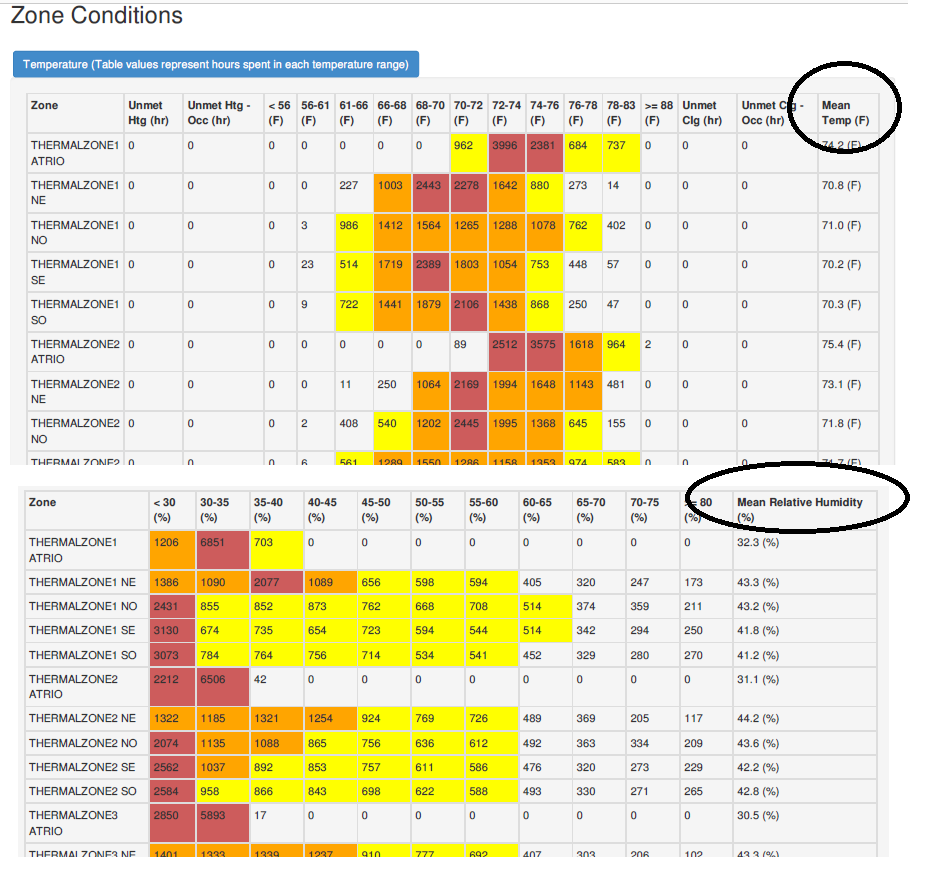Why is RH(relative humidity) so small?
Hi everyone, I'm running energy simulation in OpenStudio, and these are the results of mean temperature and RH (%). The mean temp of the thermal zones is quite good, the most of the hours is between 68-76 F (without HVAC, only with internal gains and natural ventilation). But RH basically is very low (several hours between 30-35%). Does anyone have any suggestion? How can I encrease it and making it more reliable? PS. no hvac in the building
thanks







